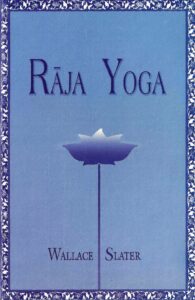Rāja Yoga – A Simplified and Practical Course (2006 edition)
By Wallace Slater.
134 Pages | First edition 1968, reprinted in 1972, first Adyar edition 2006 | Hardcover | The Theosophical Publishing House, Adyar | ISBN: 8170594782.
NB: This is the most recent edition, the older (hence cheaper) 1972 edition can be purchased in our Webshop here.
Of all forms of yoga, which are taught and practised in the East, Rāja Yoga is considered the kingly science; it aims at the development of man's full potential and the expression of his inner spiritual 'Self'. In this small volume, the author offers the basic technique of this ancient classic system of yoga in a graded practical 'do-it-yourself'' course divided into 10 lessons.
The instructions include posture, right attitudes and, most importantly, methods of meditation. This simplified course will be of inestimable value in aiding the student to find a means of inner quiet amidst the rush and turmoil of a busy life, to discover new insights and to realize himself as an integrated human being.
From the Introduction (p. 1):
" The term 'yoga' is now generally applied to many forms of asceticism, meditation and spiritual training whether practised by Hindus, Buddhists or Christians. It is, however, primarily an ancient Indian form of discipline, which has been modified by later Indian writers, adopted by Buddhists and practised in the West in many different forms by people professing the Christian faith or none. It is therefore to India, that we look for the original source material.
Yoga, derived from 'yuj', implies, ' to bind together', 'to yoke', and, in this sense, its practice is to unite the individual spirit of man with the greater Spirit of God (Īśvara), or with the Oversoul of humanity. But first, there must be an unbinding, a separation of the external from the internal, of the 'profane world' from the spirit. This is achieved by various yoga practices, which aim to withdraw consciousness from the periphery to the centre, from the material world of our outward senses to a calm, inner centre of reality, variously called Spirit, truth, Wisdom, the 'Self', ātman. "
 Bezig met bijwerken...
Bezig met bijwerken...